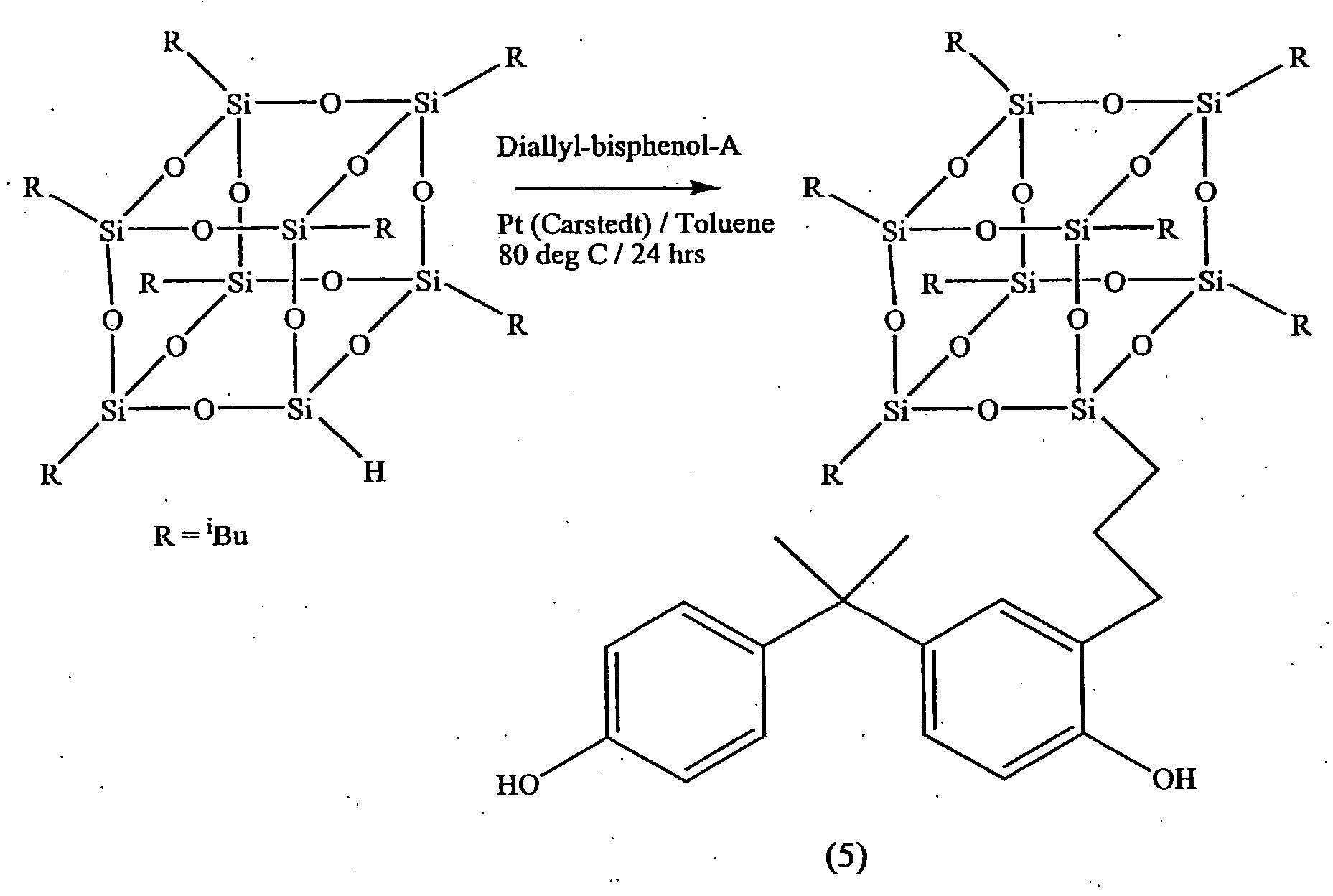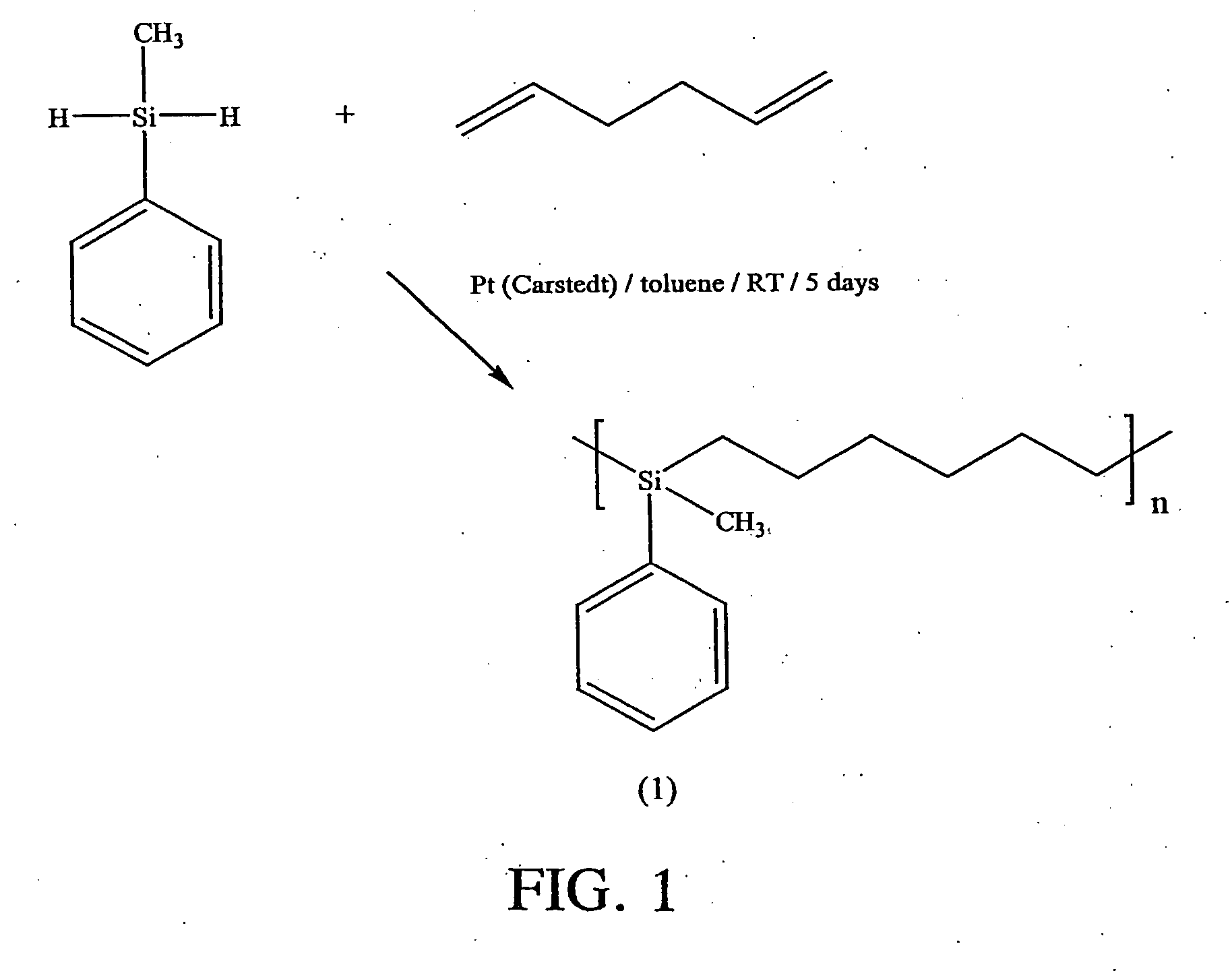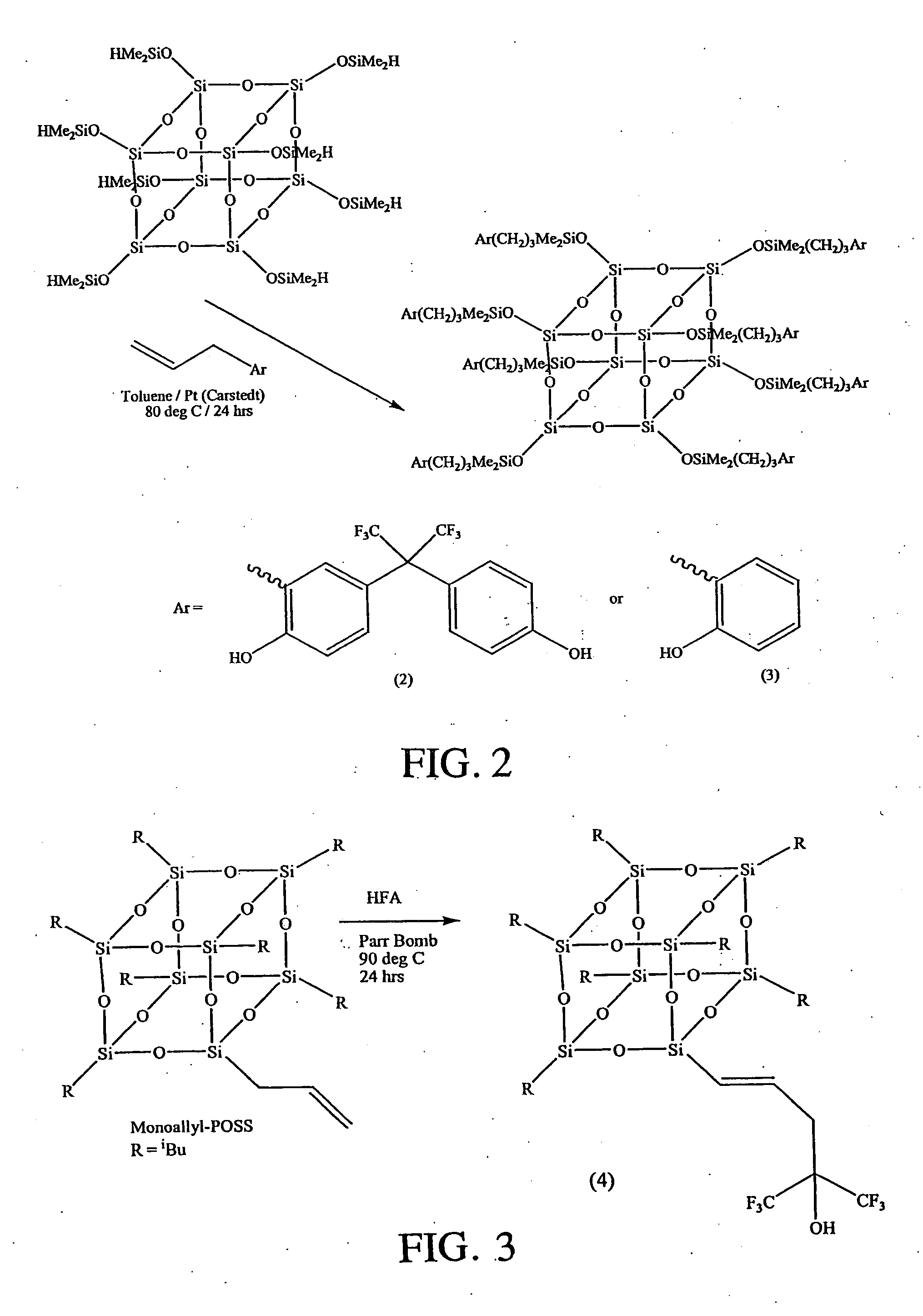Functionalized particles for composite sensors
a technology of composite sensors and functionalized particles, applied in the direction of instruments, chemical methods analysis, analysis using chemical indicators, etc., can solve the problems of difficult to develop a simple polymer, general commercial availability of polymers with every conceivable type of functional groups, and inability to achieve perfectly selective detection. , to achieve the effect of reducing cost and easy manufacturing
- Summary
- Abstract
- Description
- Claims
- Application Information
AI Technical Summary
Benefits of technology
Problems solved by technology
Method used
Image
Examples
example 1
Polymethylphenylcarbosilane-C6 (1) Matrix Polymer
[0041] A 25 mL one-necked round-bottomed flask was equipped with a Teflon coated magnetic stirrer bar and a condenser with a nitrogen inlet at its top. The flask was charged with 1.647 g methylphenylsilane (13.4 mmol), 1.107 g 1,6-hexadiene (13.4 mmol), 10 mL toluene and one drop of platinum divinyltetramethyldisiloxane complex in xylene. The mixture was stirred at room temperature for 5 days and then stirred with activated charcoal at room temperature for 24 hours. The charcoal residue was removed by gravity filtration and the toluene was evaporated to give the polymeric product (synthesized in accordance with the reaction scheme shown in FIG. 1) as an oil in quantitative yield. 1H NMR (CDCl3): δ (ppm) 0.23 (s; SiCH3), 0.73 (m; SiCH2), 1.27-1.35 (2 m; SiCH2CH2, Si(CH2)2CH2), 7.34 (m; ArH), 7.48 (m; ArH). 13C NMR (CDCl3): δ (ppm) −5.1 (SiCH3), 14.1 (SiCH2), 23.7 (SiCH2CH2), 33.2 (Si(CH2)2CH2), 127.6 (ArC), 128.6 (ArC), 133.8 (ArC), 1...
example 2
Octa-[Propyl-(Bis(-4-Hydroxyphenyl)Hexafluoropropane)] POSS (2)
[0042] A 10 mL one-necked round-bottomed flask was equipped with a Teflon coated magnetic stirrer bar and a condenser with a nitrogen inlet at its top. The flask was charged with 0.070 g octasilane-POSS (0.069 mmol), 0.208 g 2-(3-allyl-4-hydroxyphenyl)-2-(4-hydroxyphenyl)hexafluoropropane (8 equivalents, 0.552 mmol), 4 mL toluene and one drop of platinum divinyltetramethyldisiloxane complex in xylene. The mixture was heated at 80° C. for 24 hours and then stirred with activated charcoal at room temperature for 24 hours. The charcoal residue was removed by gravity filtration and the toluene was evaporated to give the product (synthesized in accordance with the reaction scheme shown in FIG. 2) as a white solid in quantitative yield. IR (thin film): ν (cm−1) 3406 (OH), 2959, 2926, 2869 (CH2), 1611 (Ar), 1513 (Ar), 1436 (Ar), 1380 (CF3), 1253 (SiCH3), 1204 (SiCH2), 1168, 1090 (SiOSi). 1H NMR (CDCl3): δ (ppm) 0.10 (s; SiCH3)...
example 3
Octa[Propyl-2-Phenol] POSS (3)
[0043] A 10 mL one-necked round-bottomed flask was equipped with a Teflon coated magnetic stirrer bar and a condenser with a nitrogen inlet at its top. The flask was charged with 0.200 g octasilane-POSS (0.196 mmol), 0.210 g 2-allylphenol (8 equivalents, 1.57 mmol), 3 mL toluene and one drop of platinum divinyltetramethyldisiloxane complex in xylene. The mixture was heated at 80° C. for 24 hours and then stirred with activated charcoal at room temperature for 24 hours. The charcoal residue was removed by gravity filtration and the toluene was evaporated to give the product as a white solid in quantitative yield. IR (thin film): ν (cm−1) 3444 (OH), 2954, 2924, 2861 (CH2), 1590, 1505, 1486, 1449 (Ar), 1250 (SiCH3), 1172, 1087 (SiOSi). 1H NMR (CDCl3): δ (ppm) 0.12 (s; SiCH3), 0.64-0.70 (t; SiCH2), 1.62-1.76 (m; SiCH2CH2), 2.59-2.64 (t; ArCH2) 6.73-7.33 (4 m; ArH). 13C NMR (CDCl3): δ (ppm) 1.2 (SiCH3), 17.6 (SiCH2), 23.5 (SiCH2CH2), 33.6 (ArCH2), 115.5 (Ar...
PUM
| Property | Measurement | Unit |
|---|---|---|
| temperature | aaaaa | aaaaa |
| particle size | aaaaa | aaaaa |
| particle size | aaaaa | aaaaa |
Abstract
Description
Claims
Application Information
 Login to View More
Login to View More - R&D
- Intellectual Property
- Life Sciences
- Materials
- Tech Scout
- Unparalleled Data Quality
- Higher Quality Content
- 60% Fewer Hallucinations
Browse by: Latest US Patents, China's latest patents, Technical Efficacy Thesaurus, Application Domain, Technology Topic, Popular Technical Reports.
© 2025 PatSnap. All rights reserved.Legal|Privacy policy|Modern Slavery Act Transparency Statement|Sitemap|About US| Contact US: help@patsnap.com



